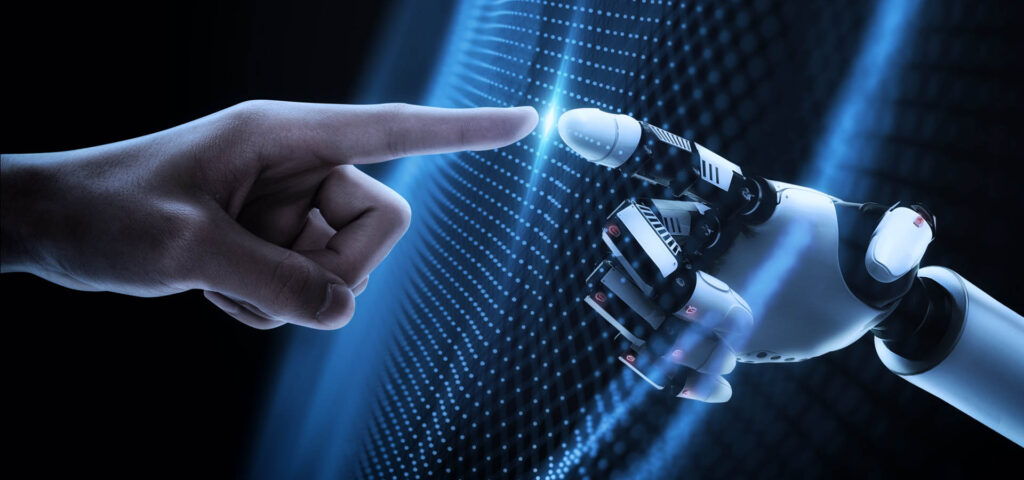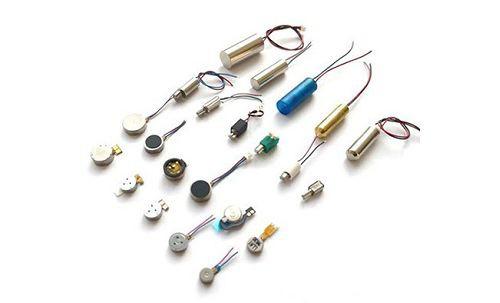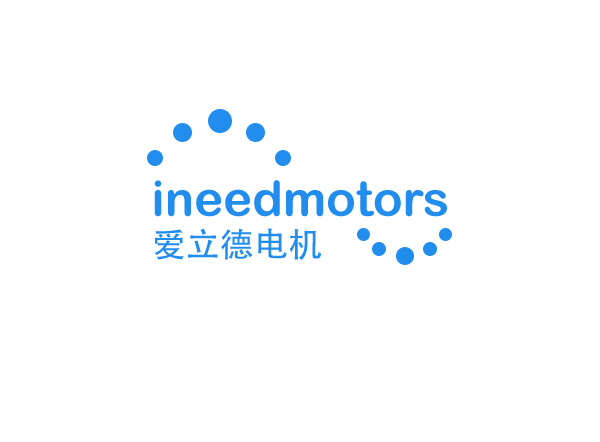Advancements in Vibration Technology: How Modern Motors Are Revolutionizing Haptic Feedback

Vibration technology has changed a lot with new motors. These changes let you feel clear and realistic vibrations in devices. It could be the soft buzz of a phone alert or real-like feelings in virtual reality. These updates make using technology more exciting and fun. Better motors improve how devices work and how people use them.
Key Takeaways
Haptic feedback improves how we use devices by linking touch with actions, making gadgets more fun to use.
New motors like Linear Resonant Actuators (LRAs) give accurate and energy-saving vibrations, helping gadgets like phones and smartwatches work better.
Vibration technology is important in areas like gaming and healthcare. It makes things feel real and helps people learn skills.
Companies like INEED are leaders by making motors that can be adjusted to improve gadgets and make users happy.
The future of haptic tech will mix vibrations with heat and pressure to create even cooler and more lifelike experiences.
Understanding Haptic Feedback and Its Importance
What Is Haptic Feedback?
Haptic feedback uses touch to send messages through devices. It lets you feel vibrations, forces, or movements like real-life actions. For instance, when your phone buzzes for a message, that’s haptic feedback. It connects the digital world with the physical one. This makes using technology easier and more fun.
Haptic feedback is measured in different ways. Static factors include how buttons move when pressed. Dynamic factors include how things like stiffness and weight feel. User satisfaction is also important. It looks at how hard tasks are and how well people use the device.
Measurable Factor | Description |
|---|---|
Static Measurements | How buttons move when pressed or how knobs turn. |
Dynamic Effects | Stiffness and weight affect how vibrations feel. |
User Satisfaction | Checked by seeing how easy and enjoyable devices are to use. |
The Role of Vibration Technology in Haptic Systems
Vibration technology is key to making haptic feedback work. Small motors, like ERM motors, create vibrations by spinning uneven weights. This makes the buzzing you feel. LRA motors are another type. They make more accurate vibrations, perfect for phones and smartwatches.
Some systems use piezoelectric actuators. These make exact movements with less noise but need more power. Advanced tools like TouchSense improve these actuators. They offer over 100 touch effects, giving devices unique and real-like sensations.
Why Haptic Feedback Matters in Modern Devices
Haptic feedback makes using devices more exciting. It adds touch to digital actions, making them feel real. In gaming, it helps you feel every move. In healthcare, it helps train people by copying real-life situations. It also gives quick feedback, like a buzz when you press a button.
This technology helps everyone, including people with disabilities. It gives them new ways to use devices. Companies using haptic feedback stand out. It creates cool features that attract users and keep them loyal.
Tip: Adding haptic feedback with sounds or visuals makes devices more fun. This mix keeps you interested and makes using them unforgettable.
Advancements in Vibration Technology
Linear Resonant Actuators (LRAs): Precision and Responsiveness
Linear Resonant Actuators (LRAs) are changing how vibrations work. These motors give steady and accurate vibrations, great for phones and wearables. Unlike older motors, LRAs work in a small frequency range, usually 170 Hz to 180 Hz. This helps save energy and gives clear haptic feedback.
Why are LRAs so useful? Their design lets them reach top speed fast. This quick action is important for things like gaming controllers or medical tools. LRAs also use less power than older motors, making them great for gadgets with batteries.
Metric | Description |
|---|---|
Speed | LRAs quickly reach top speed, giving clear vibrations. |
Response Time | Fast response is key for accurate haptic feedback. |
Frequency Range | Works in a small range (170 Hz to 180 Hz) for efficiency. |
Power Consumption | Uses less power, perfect for battery-powered devices. |
As people want better devices, LRAs are improving. They now fit easily into electronics, giving users more fun and interactive experiences.
Piezoelectric Actuators: Efficiency and Versatility
Piezoelectric actuators are known for being efficient and flexible. They turn electricity into tiny, exact movements, making them useful in many fields. These include medical tools, airplanes, and optical systems.
They are efficient because they create strong force while using little power. They also provide very precise movements, which are important for tasks needing accuracy. For example, in making semiconductors, these actuators help by moving exactly as needed without delays.
Piezoelectric actuators are also great for vibration technology. They make quiet vibrations, improving devices like phones and wearables. By using these actuators, companies can make products that are both reliable and efficient.
Ultrasonic Motors: High-Speed and Low-Noise Solutions
Ultrasonic motors are fast and quiet, making them special in vibration tech. They use piezoelectric parts to create ultrasonic vibrations, which move the motor. This makes them quick and silent, perfect for places needing less noise.
These motors are impressive because of their speed and strength. For instance, an ultrasonic motor’s rotor can spin at 306 rpm and has a torque of 4.7 μN m. They also react 100 times faster than older piezoelectric motors, giving instant and accurate results.
Another big plus is their quietness. Unlike regular motors, ultrasonic motors don’t make noise when working. This makes them great for quiet places like hospitals or labs.
Ultrasonic motors show how vibration tech keeps getting better. By focusing on speed, accuracy, and quietness, they meet the needs of today’s devices.
INEED’s Role in Improving Vibration Technology with Motors

INEED is a top company making better vibration motors. These motors are not just parts; they create the touch feelings you enjoy in devices. From a phone buzzing to a game controller vibrating, INEED’s work changes how you use technology.
What Makes INEED’s Motors Special
Why are INEED’s motors so unique? It’s because they are flexible and accurate. INEED makes many types, like coin motors, brushless coin motors, and LRAs. Each motor is made for specific uses, from small gadgets to big machines. These motors save energy and can be adjusted to fit your device perfectly.
For example, LRAs react quickly and give steady vibrations, great for phones and medical tools. Brushless coin motors last longer and use less power, ideal for tough devices. This flexibility helps INEED serve many industries, like healthcare and communication.
How INEED Changes the Market
INEED doesn’t just make better motors; they change whole industries. The vibration motor market is growing fast, and INEED leads this growth. Look at these numbers:
Year | Market Value (USD million) | Growth Rate (%) |
|---|---|---|
2020 | 4,851 | 13.9 |
2025 | 15.5 | |
2035 | 43,318 | 15.5 |
This shows more people want advanced motors. INEED helps companies meet this need with reliable and affordable motors, improving how devices feel and work.
Why INEED’s Work Matters to You
When you pick a device with INEED’s motors, you get years of hard work and skill. INEED checks every motor to make sure it’s high quality. They also let you customize motors to fit your needs. This mix of trust and flexibility makes INEED a leader in vibration technology.
Note: INEED’s motors make devices easier and more fun to use. Whether it’s a smartwatch, phone, or medical tool, INEED gives you a better touch experience.
Real-World Uses of Modern Motors in Haptic Feedback
Smartphones and Wearables: Better User Experience
Modern motors change how phones and wearables feel to use. Haptic feedback makes taps and swipes feel more real. When typing, small vibrations feel like pressing real keys. This helps you type better and enjoy it more. Vibrations also make alerts easier to notice, even in loud places.
Smartwatches use special motors called LRAs for quick vibrations. These motors save energy and work well in small devices. Alerts are clear and on time, keeping you informed. Whether tracking steps or getting a call, haptic feedback keeps you focused without interruptions.
Phones use vibrations to improve typing and alert noticing.
Smartwatches use LRAs for fast and energy-saving vibrations.
Vibrations help alerts stand out, even in noisy areas.
Gaming and Virtual Reality: More Realistic Fun
Games and VR feel more real with advanced motors. Vibrations make explosions, crashes, and movements feel lifelike. This makes playing games or exploring VR worlds exciting and unforgettable.
VR is now cheaper and easier to use for learning. It helps people train by making tasks feel real. Immersion means feeling sensations like in real life. Presence means feeling part of the virtual world. Together, they make learning faster and more engaging.
Special gaming tools use haptic feedback to copy real-life situations. These tools help in healthcare and education. They make learning surgery or solving puzzles more interactive and fun.
Medical Devices: Safer Training and Feedback
Medical tools use haptic feedback to teach skills safely. Simulators vibrate to copy real surgery conditions. This helps you learn without risking patients. Studies show haptic feedback lowers mistakes during procedures.
VR simulators with vibrations make training even better. They give instant feedback to improve your skills. Whether you're new or experienced, haptic feedback makes practice safer and more effective.
Vibrations make surgical training more realistic and safe.
They lower mistakes during medical procedures.
VR simulators with vibrations improve skill learning and testing.
Industrial and Beauty Applications: Expanding Use Cases
Vibration technology is changing industries by making tools work better. It helps in factories and beauty products, improving how they perform and the results they give.
Industrial Applications: Precision and Productivity
In factories, vibration motors are key for accurate and reliable tasks. Conveyor belts use them to move items smoothly and quickly. Vibrations help sort, transport, or pack things without needing workers to do it by hand. This saves time and reduces mistakes.
Hand tools like drills and grinders also use vibration motors. These motors give feedback to users, helping them control the tools better. For example, when using a drill, vibrations let you feel how much pressure to apply. This makes the job safer and more precise.
Vibration motors also make workplaces safer. Machines with vibration alerts warn workers about dangers like overheating or gas leaks. These alerts are easy to notice and help prevent accidents by giving quick warnings.
Beauty Applications: Enhancing User Experience
In beauty, vibration motors have improved skincare and personal care tools. Facial brushes and massagers use vibrations to clean skin better. A vibrating facial brush removes dirt and oil more effectively than scrubbing by hand. This leaves your skin feeling clean and refreshed.
Anti-aging tools also use vibration technology. They send tiny pulses to boost blood flow and help make collagen. This reduces wrinkles and makes skin firmer. These devices let you get spa-like results at home.
Beauty tools with vibrations also make self-care more relaxing. For example, vibrating scalp massagers improve blood flow and feel soothing. This makes taking care of yourself more enjoyable and helpful.
Why These Applications Matter
Vibration technology solves problems in factories and beauty products. In factories, it speeds up work and keeps people safe. In beauty, it makes products work better and more satisfying to use. These examples show how vibration motors are being used in new and helpful ways.
Tip: Pick devices with adjustable vibration settings. This lets you choose the right level for your needs, whether for work or personal care.
Success Stories in Haptic Innovation
Apple’s Taptic Engine: Setting a New Standard
Apple’s Taptic Engine has changed how devices feel to use. It gives clear and steady vibrations, making iPhones and Apple Watches feel smooth. Unlike many Android motors, the Taptic Engine can make low-frequency vibrations. This creates a more natural touch experience. Its bigger size and higher weight ratio allow stronger feedback.
Metric | Apple Taptic Engine | Android Actuators |
|---|---|---|
Actuator Size | Bigger | Smaller |
Resonant Frequency Range | 110–130 Hz | 160–300 Hz |
Ability to Produce Low-Frequency Vibrations | Yes | No |
Actuator Footprint-to-Phone Weight Ratio | Higher | Lower |
This technology has changed how we use devices. Typing, scrolling, or getting alerts feels better and more enjoyable with the Taptic Engine.
VR Innovations: Making Virtual Worlds Feel Real
Virtual reality (VR) uses advanced motors to feel lifelike. Haptic feedback in VR makes you feel real-world sensations. For example, picking up an object in VR feels like holding it. Vibrations copy the texture and weight, making the virtual world seem real.
Devices like the PS5 DualSense controller and Nintendo Switch show how important haptics are in gaming. These tools use smart vibration tech to give exact feedback. You can feel raindrops or the kickback of a weapon. As industries like cars and the metaverse use haptics, VR will feel even more real and exciting.
INEED’s Vibration Motors: Changing the Game
INEED has improved vibration motors for many industries. These motors create touch sensations in gadgets like phones and medical tools. INEED customizes motors to fit each device, from small wearables to big machines.
Their Linear Resonant Actuators (LRAs) are fast and save energy. This makes them perfect for devices needing accurate feedback. INEED offers many motor types, helping businesses improve user experiences and stay ahead.
Did you know? The haptic market is growing fast. In 2021, phones made up over 55% of its revenue. As industries like XR and cars use haptics, motors like INEED’s will be in even higher demand.
The Future of Haptic Feedback and Vibration Technology
New Trends in Actuator and Motor Technology
Actuators and motors are improving fast, bringing new ideas. Electro-mechanical actuation (EMA) is replacing older hydraulic systems. These electric actuators are simpler and work better. Smart actuators are another big step. They work on their own, making systems safer and more dependable, especially in planes.
3D printing is also changing the game. Methods like additive laser melting (ALM) make lighter parts for modern designs. Better materials and controls are making actuators stronger and more efficient. These updates help motors last longer and work in more ways.
The need for better haptic feedback is pushing these changes. New tech like voice coil motors (VCMs) and piezoelectric haptics are becoming popular. They are precise and save energy, helping industries like gaming, healthcare, and electronics.
Multisensory Haptic Feedback: What’s Next?
The future of haptics is about using more senses. Imagine feeling vibrations, heat, and pressure all at once. Tests already show this is possible. For example, a robotic hand with a haptic glove can copy both pressure and temperature. This lets users feel real sensations instantly.
Multisensory haptics has many uses. In games, you could feel the warmth of fire or cold snow. In healthcare, doctors could practice with tools that feel like real skin. These advances make experiences more real and exciting.
Combining vibration motors with other sensory tech is changing how we use devices. This next step in haptics will improve industries and make devices more fun to use.
INEED’s Plans for the Future of Vibration Motors
INEED wants to lead the way in vibration technology. They focus on making motors that are both powerful and flexible. By researching new ideas, INEED plans to create motors for multisensory haptics. This includes adding features like heat and pressure effects.
Customization is key for INEED. They work with clients to make motors for specific needs. Whether it’s a small motor for a smartwatch or a strong one for medical tools, INEED creates solutions that improve how devices feel.
As the haptic market grows, INEED is ready to meet the demand. Their focus on new ideas ensures their motors will stay the best. With INEED, the future of haptics is full of possibilities.
New motors are changing how we use technology. They make devices more fun by giving clear and real-like vibrations. For example, in dental training, haptic tools help you practice by copying real feelings. In virtual reality, these motors let you feel pressure and resistance, making learning better. These improvements show how vibration tech helps in areas like healthcare and gaming. As this tech grows, it will keep improving how we interact with the digital world.
FAQ
Why does haptic feedback matter in daily devices?
Haptic feedback makes using devices feel more real. It improves typing, gaming, and alerts by adding touch sensations. This makes gadgets easier to use and more enjoyable.
Why should vibration motors save energy?
Energy-saving motors help gadgets last longer without charging often. This is important for phones and wearables, making them more useful every day.
Why are LRAs good for wearables?
LRAs give quick and accurate vibrations, perfect for small gadgets. They are small, use little power, and give clear feedback without wasting battery.
Why is it important to customize vibration motors?
Customization makes motors fit your gadget’s needs. You can change how strong or fast the vibrations are, making devices work better for you.
Why is INEED a top name in vibration motors?
INEED makes smart, high-quality motors for many industries. Their motors are reliable, save energy, and improve how devices feel to use. This makes them a leader in haptic technology.
See Also
Understanding The Functionality Of Vibration Motors In Haptics
The Advantages Of Linear Vibration Motors In Haptic Feedback
Exploring Haptic Feedback Technology: Uses, Advantages, And Innovations
LRA Vibration Motors: Key Elements Driving Haptic Feedback Systems
Get Custom Micro DC Motors from
INEED Motors!
Leading Brand in Vibration Motor Manufacturing Industry
